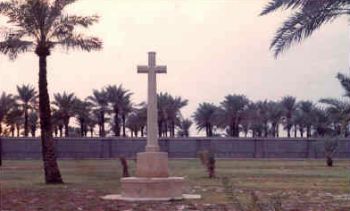|
|
| Home Topics Memorials Miscellany Transcripts References Family History Glossary Latest Beeston Blog About us | Site Search |
|
Charles Albert Smith was born in 1871 in Bungay, Suffolk 2 the eldest son of Harry (c1848-1918), a coach painter, and his wife Matilda (c1848-1929). In 1881, the family, which then included Charles' younger siblings, Elsie (b. c1875), Edmond (b. c1877) and Beatrice (b. c1879), was living at 2 Julian Street, Beighton, Norwich 3. By 1891, Charles had left home and, by 1901, he had taken a job in Beeston as a non-domestic groom and was boarding at 20 Moore Gate with Ann Street and her family4. Ann was twice widowed, having first been married to John Jackson from 1884 until his death in 1887 and then to Edwin Street from 1889 to 1899. She had had a very difficult time and was now trying to support herself and her daughter, as a hosiery worker. Perhaps it was not surprising that ten years later Charles and Ann were still together at Moore Gate with Charles, by now a storeman at Ericssons telephone works, head of the household 5. If Ann, and indeed Charles, thought that they now had some stability in their lives, it was all to change for the worse once again when war came in 1914. Charles was then aged 43, rather older than most of those who volunteered in the early part of the war and beyond the upper limit when conscription was introduced in 1915. Nevertheless, Charles enlisted with the Royal Army Service Corp, where his horsemanship could be put to good use. As his Service Record does not survive, we do not have the dates of his enlistment and deployment, but it appears likely that his subsequent attachment to 40th Field Ambulance, Royal Army Medical Corps (part of the 13th (Western) Division) took place after it had been withdrawn from the Gallipoli campaign and from defensive positions around the Suez Canal and had moved to Mesopotamia (now Iraq) in February 1916. Here British troops were engaged in defending its oilfields and pipeline against Ottoman troops supported by Germany. The British garrison at Kut al Amara was then under siege and 13th Division took part in unsuccessful attempts to relieve the city and the British garrison. The surrender of the garrison at Kut on 29th April 1916 was an enormous blow to British prestige 6. Private Smith died on 12 June 1916, apparently from illness, possibly caused by the extreme heat that were inherent in this area or unsanitary conditions sometimes encountered by an army in the field. He was buried in the Amarah War Cemetery at Al 'Amara, in what is now Iraq. The cemetery contains 4,621 burials from the First World War, including 3,000 interred after the war. Tragically, this site has become virtually destroyed. In 1933, all of the headstones were removed when it was discovered that salts in the soil were causing them to deteriorate. A screen wall was then erected with the names of those buried there engraved upon it. Since 1991, it has not been possible for the Commonwealth War Graves Commission to maintain the cemetery and, despite unofficial care by local caretakers, it has fallen into almost complete disrepair. In 2006, the Cross of Sacrifice was destroyed and the perimeter wall was damaged. A report in The Times in 2016 confirmed that the cemetery was in a seriously deteriorated condition with plaques falling from the memorial wall and stones broken. The CWCQ has confirmed its intention to restore the cemetery when conditions allow 7. In his CWGC memorial entry, Private Smith is remembered by his mother, Matilda Smith, then of 49 Vauxhall Street, Norwich and on behalf of his late father, Harry Smith, who had died in 1918, before the memorial was written. His effects, including his pay and War Gratuity, he bequeathed to Ann Street8. His mother was awarded a small pension (3s 6d a week) which continued up to her death in 1929. Ann Street(s) died in 1923 and is buried in Beeston Cemetery9. Private Smith is also remembered on his parents' headstone in Earlham Cemetery, Norwich, on the Norwich City war memorial and on a memorial at Holy Trinity Church, Norwich10. Footnotes 1The photograph of Amara War Cemetery is from the 'Leaving Cheltenham' website. (www.remembering.org.uk) 2His birth was registered in Wangford Registration District, Q4/1871 (Ref 4a 659) 3Norwich, Norfolk, 1881 Census, Piece 1949 Folio 69 4Beeston, Notts, 1901 Census, Piece 3153 Folio 90. Ann's surname is then recorded as 'Streets' (rather then the usual 'Street') as is sometimes the case. 5Beeston, Notts, 1911 Census, Piece 20432 RD429 SD3 ED7 Schedule 40 6There is more on the Mesoponamia campaign at www.longlongtrail.co.uk/battles/the-campaign-in-mesopotamia and on 40th Field Ambulance involvement at www.wartimememoriesproject.com/greatwar/allied/battalion.php?pid=12802 7More details of the cemetery and its present condition are at https://en.wikipedia.org/wiki/Amara_War_Cemetery 8His pay totalling £3 3s 5d and a War Gratuity of £4 was paid to Mrs Ann Street as his sole legatee (UK, Army Registers of Soldiers' Effects - ancestry.com) 9She is buried with a grandson and son-in-law. A memorial survives and can be seen here 10Images and more details may be found here. Grateful thanks to Peter Clarke for this and other information. |
|
|||||||||||
|
|
|||||||||||||
